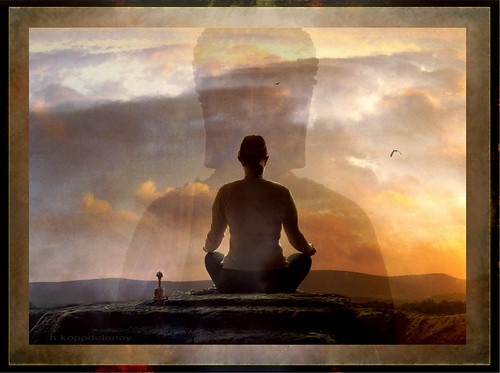
For a while now, Fusion coach has wanted me to type a blog post about meditation. I’ve been reluctant for a couple of reasons, however. Firstly, despite a month long program living as a Chinese Humanitarian Buddhist monk, I’m a novice at any kind of meditation. Secondly, there are many kinds of meditation and the kind that I have familiarity with is in some ways antithetical to weightlifting.
What Meditation Is…
I think that most people think of meditation as concentrated breathing that makes you a healthier person, but there are many forms of meditation. Buddhism, generally speaking and through my rudimentary lens, is not about personal health but ending suffering through a process of liberation. Notably, there is no self. Put another way, there is no “I” entity to make healthy; there are just causes and effects. So, in one sense, if I were to type a blog post about meditation, it’d really be about a process of liberation in which the end result is no more weightlifting!!!
But we don’t want that, or at least I don’t want that. And, after some reflection, I think I can talk a little about the style of meditation I practiced and how it could be incorporated into weightlifting, even if that is not the intended purpose of this style of meditation.
Mindfulness
The style I am most familiar with is mindfulness meditation. The most basic form of this style is observation of breathing. While simple in theory, it’s difficult to master. You observe your breathing WITHOUT manipulating your breathing. You just breath normally. As you breath, you observe the inhalation, exhalation, expansion, contraction, etc. Importantly, you do not let your mind wonder; your focus must be ever-present on your breathing. To the point, you are mindful of your breath. Without trying to get too metaphysical, you are at the same time outside yourself and yet yourself. In this way, you become better at concentration.
Improvement of this style of meditation can serve at least two beneficial purposes for weightlifting: (1) it can help you focus on the lift without over-thinking the lift, and (2) it can help you better observe how you perform the lift without getting in the way of actually performing the lift. For example, Fusion coach might ask me to tell him about the lift I just performed. Ideally, I’ll respond that I did this and that wrong and this and that right. Accordingly, sometimes it’s helpful to be able to determine what you did wrong or right during the lift, yet you don’t want to get in the way of performing the lift because you’re thinking about what you are doing wrong or right; it’s a delicate balance of perception and action. Here, i think mindfulness meditation can contribute to attaining this healthy balance of simultaneous observation and performance: of being at the same time an outside observer and also the performer being observed.
